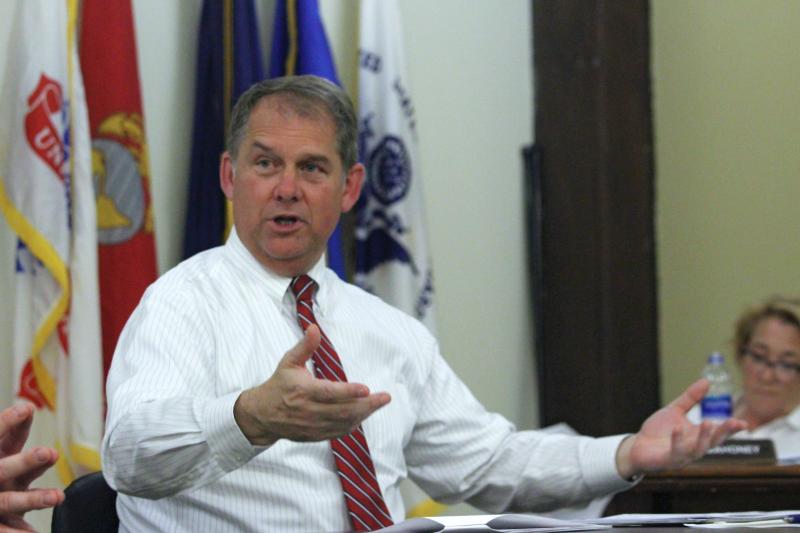Zoning Board of Appeals pushes Tabor Academy lighting hearing to next month
The Zoning Board of Appeals on Thursday requested a better idea of what Tabor Academy's field lighting may look like before inching closer to a final call.
Citing the need for a visualization of lights on the field, Zoning Board members on Thursday tabled the hearing for July 26.
Tabor Academy hopes to install five 90-foot lights around its field. Residents were divided over the school’s plans during the meeting. Meanwhile, Zoning Board members questioned traffic, size, and durability of the structures (under zoning laws, lights must endure 110 mile-an-hour winds).
Nearing the end of a roughly two-hour hearing in which the headmaster made his case for a special permit, Quirk urged members of the audience and Zoning Board to admit preconceived attitudes towards the lights.
Academy Headmaster John Quirk claimed there is a “philosophical dilemma” among residents over lighting the private school’s athletic field.
“It seems to me like there are people who are opposed to lights and people who are okay with the lights,” he said at the meeting. “And I know I can’t speak for everyone in the room, but we’ve always spent a lot of time working on this over the years and there’s kind of a fundamental disagreement with the concept of lights no matter what they look like.”
Tabor Academy filed an application for special permit last month. Any freestanding structure above 35 feet is required to have such.
Quirk tried to alleviate frustration over the lights among abutters months prior to the submission. The head of school proposed an LED athletic field design to allay previous neighborhood anxiety.
Tabor Academy officials originally wanted this in 2011: four 90-foot stadium lights as part of a greater athletic field project. But the lights at the time didn’t meet review from the Planning Board.
Then-Head of School Jay Stroud said that the school would use the Dover Amendment, an exemption for nonprofits to build without a permit. Despite the Amendment, the commissioner blocked permits for not abiding by structural height laws.
The result: a legal kerfuffle between the school and town government. Stroud eventually withdrew an appeal for the lights.
Outside of the Town House, residents also weren’t pleased with the project. Over 100 Marion locals that year petitioned athletic field construction. Critics argued that there would be noise and lighting pollution.
Some of the concerns still linger. Nearby resident Heather Burke of Front St. stood opposed to the structures, mentioning shadow issues, safety, and aesthetics.
"First of all, many people talk about the administration of Tabor changing and while it may have changed, the bad idea of these lights persists," said Burke at the meeting. "So it might be handled better, but it's still a bad idea that continues."
Cottage St. resident Shelly Richins compared the possible lights to Bishop Stang High School and worried that the structures could bring in heavy spillage of light and noise.
Tabor Academy officials assured that the LED lights would be less powerful than the Dartmouth-based school.
For Bob Sanderson, a Ryder St. resident, he was worried about lights decreasing his property's value.
Impressed by the project's engineering, Albin Johnson of Spring St., later quipped back at Sanderson: "Bob, those foundations are there. It's not going to obstruct the waterfront. It's going to be going straight out."
"You're trying to make a joke of it," said Sanderson.
Separate from Sanderson and Johnson, Jay Ryder, a former chair of the Planning Board, recommended allowing Tabor Academy to test out the lighting for a year. Ryder said he was impressed with the Academy's administration since Stroud.
In an interview after the meeting, Quirk said his administration could eventually give up on lighting the field if the town fails to approve the special permit.












